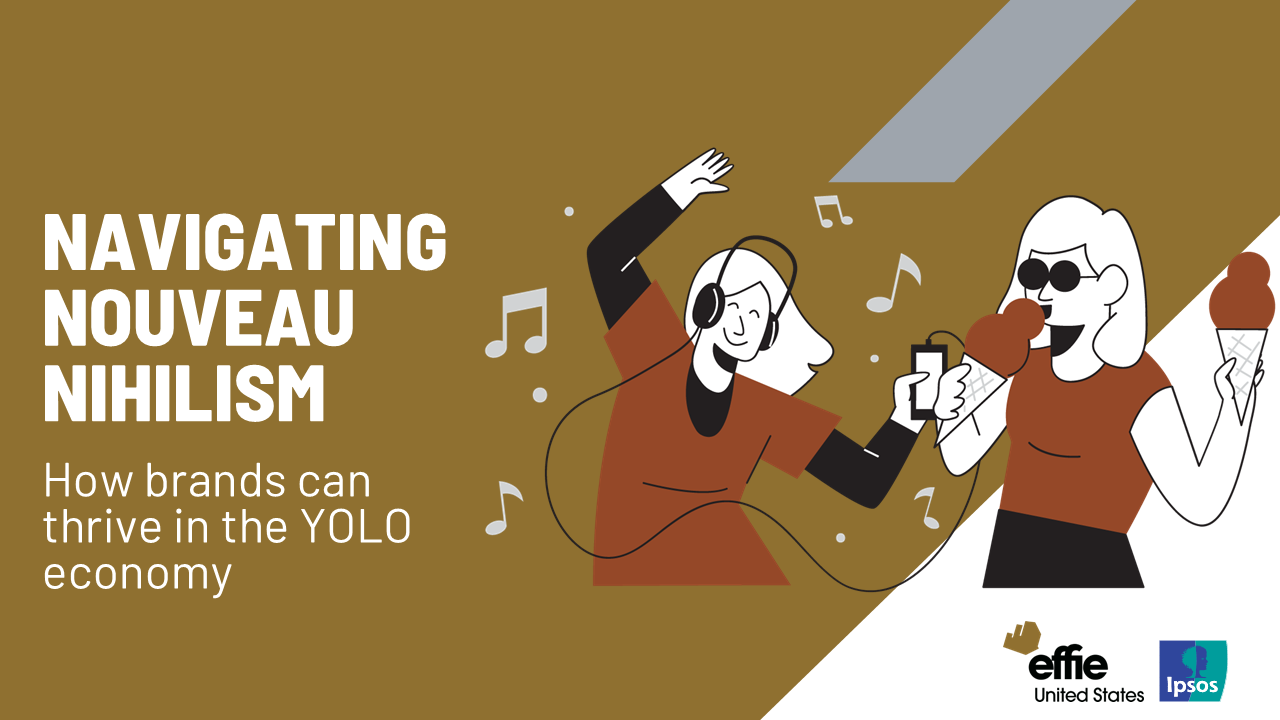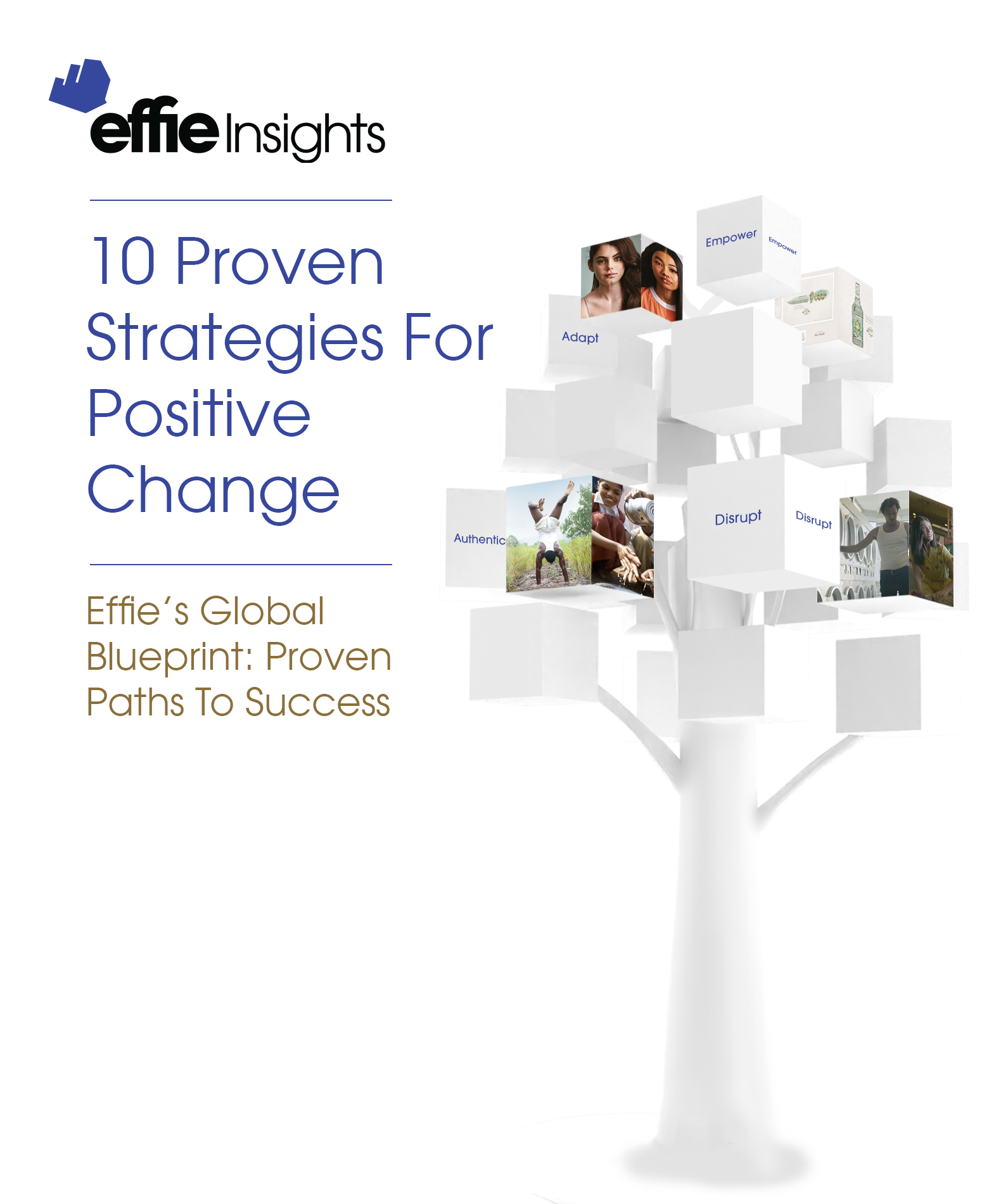
Brands are well aware that they can benefit from spending through a recession, but it’s less often recognised that the scale of the spend need not be an issue. Investment, regardless of size, can always be effective, which is worth remembering as we face a global ad spend drop of 11.9% this year, according to GroupM.
Effie’s data shows that it’s fine to cut back on your budget, but it’s never OK to compromise on thinking: perhaps surprisingly, the budgets for the Grand and Gold winners are remarkably consistent, whether we are living through a growth phase or a recession.
In both the aftermath of the 2008 global financial crash (2009-2011), and in the recent boom years of 2012-2015, almost 60% of winners spent less than $5 million on their campaigns.
In the last recession, brands built up reputations and reached mass audiences with memorable campaigns that are still talked about now. Many of the big winners between 2009 and 2011 came from big brands that chose not to spend big bucks, but still achieved the kind of results that money alone can’t buy.
Old Spice’s “The Man Your Man Could Smell Like” won three Gold Effies in 2011 for work that had a budget of less than $500k. Parent company Procter & Gamble saved money by breaking the campaign on YouTube during the Super Bowl weekend, and although the spot eventually ran on TV, it was the brand’s ongoing interactive amplification of the idea, helped by the popularity of its star, Isaiah Mustafa, that made the work so effective and memorable.
It only took a $1-2 million budget for computer security company McAfee to make a major dent on its big brand rivals: market share increased by 66% and brand awareness by 150% thanks to its “H*Commerce” campaign, which won a Gold Effie in 2010. McAfee spent only $1 for every $37 (Nielsen AdViews) spent by its biggest competitor, Symantec.
Even in the boom years, Dove chose not to go overboard with its budget. The Unilever-owned brand spent less than $5 million in 2014 on the “You are More Beautiful than you Think” extension of the “Campaign for Real Beauty,” and won a Grand Effie for its efforts. One of the key learnings from this case was about investment, in the few years prior to this campaign, Dove had pumped more budget into product advertising and less on brand but soon realised it was hampering, not helping effectiveness. A newly balanced budget, saw the reintroduction of more brand activity and an overall ROI of over 3 times the average for a FMCG brand.
That’s not to say every era is the same. The Covid-19 crisis has seen the acceleration of e-commerce, as the lockdowns and social distancing have forced brands of all sizes to focus investment on developing and promoting business online. Ten years ago, the financial crisis posed different challenges, accelerating the move towards experiential marketing as a cost-effective way to explore new brand-building opportunities.
During that period, Effie Golds went to experiential campaigns for major advertisers including the US Army for a video-game style recruitment roadshow; Verizon for “How Sweet the Sound,” a search for the best church choir in Memphis; and Nike Hockey for a campaign that got kids involved at a grass roots level.
Constricted budgets for consumers and marketers have proved more of an inspiration than a barrier over the last decade. Often, successful brands have the confidence to be up front about their lack of money. In 2010, Miller High Life won Gold for its “One Second Ad,” created because it couldn’t afford the price of a regular Super Bowl spot. Premium loo roll brand Charmin’ won Gold for a campaign that promoted the brand on the idea that you need to use less of it.
The other behaviour that shines in these circumstances are brands that add to culture, by participating in a meaningful way. Examples of this are rare, but when brands get it right the rewards for them and society are plain to see. Procter & Gamble’s “Always” won three Golds for “Like A Girl,” a campaign created an enduring cultural moment with a budget of less than $500,000.
Premium ice cream brand Häagen-Dazs turned its marketing lens on the unsung workforce responsible for creating half of the brands all natural ingredients, Honey Bees. We know they’re dying out, but we don’t know why and ultimately they’re fundamental to creating one third of the natural foods humans eat. It was more than just an advertising campaign, they took meaningful action. The brand invested $250,000 into research, formed a coalition with the Association of Beekeepers, ran a school’s programme and used its advertising budget to create campaigning materials. They ended up in congress to support the fight for more Government investment into research and in doing so boosted sales, awareness, and its all-natural proposition.
There are always big spending brands whose results are very impressive too, of course. But if you’re not the proud possessor of a budget in the tens of millions, it’s reassuring to know that you can be equally effective.
Challenging economic circumstances are often a time to tighten your belt and expand your thinking, whether recruiting pupils for Detroit Public Schools or consumers for Old Spice men’s toiletries. As our Effie winners prove, brands reach their audiences through smart strategic thinking, and that can be achieved in any era.
Insights & Inspiratation is a series designed to deliver compelling lessons in effectiveness to tackle trends and relevant learnings to drive growth now. Based on insights from Effie cases and developed as a longer read.






































































